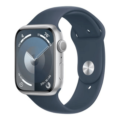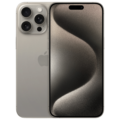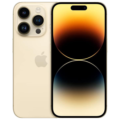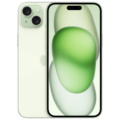- Home
- Apple Devices
- Apple iPad
- Apple iPad Pro 11 (2021) full specifications
Apple iPad Pro 11 (2021) full specifications
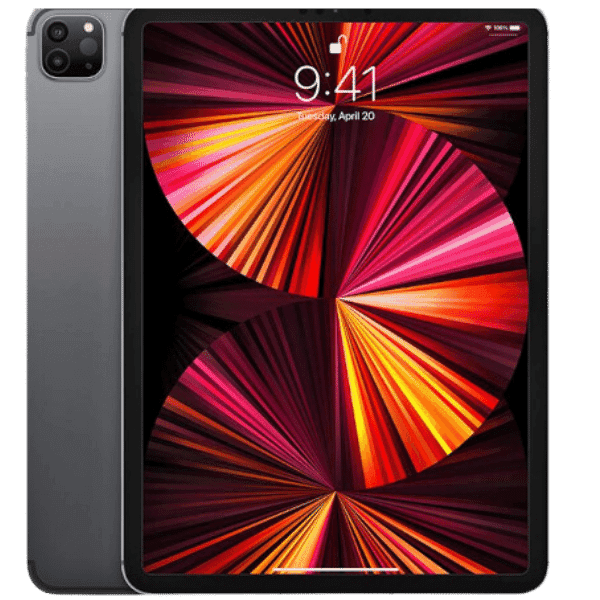
SPECIFICATIONS
General
| Status | Available |
| Announced |
2021, April 20 |
| Released | 21 May, 2025 |
| Model |
A2301, A2459, A2460, iPad13,4, iPad13,5, iPad13,6, iPad13,7 |
| Price Apple iPhone Price in USA, UK, Canada, Australia, India, Pakistan, China, Japan and Europe |
USD 946 EUR 870 |
Network
| Technology |
GSM / CDMA / HSPA / EVDO / LTE / 5G |
| 2G Network |
GSM 850 / 900 / 1800 / 1900 CDMA 800 / 1900 |
| 3G Network |
HSDPA 850 / 900 / 1700(AWS) / 1900 / 2100 CDMA2000 1xEV-DO |
| 4G Network |
1, 2, 3, 4, 5, 7, 8, 11, 12, 13, 14, 17, 18, 19, 20, 21, 25, 26, 28, 29, 30, 32, 34, 38, 39, 40, 41, 42, 46, 48, 66, 71 - A2301, A2459, A2460 |
| 5G Network |
1, 2, 3, 5, 7, 8, 12, 20, 25, 28, 38, 40, 41, 66, 71, 77, 78, 79, 260, 261 SA/NSA/Sub6/mmWave - A2301 1, 2, 3, 5, 7, 8, 12, 20, 25, 28, 38, 40, 41, 66, 71, 77, 78, 79 SA/NSA/Sub6 - A2459, A2460 |
| Speed | HSPA, LTE, EV-DO Rev.A 3.1 Mbps, 5G |
| GPRS GPRS (General Packet Radio Service) is a packet oriented mobile data service on the 2G and 3G cellular communication system's global system for mobile communications (GSM), Generally, GPRS is used for the purpose of wireless data transfer, such as sharing pictures and videos or browsing the Internet via a mobile phone connection. | |
| EDGE EDGE (Enhanced Data GSM Environment) is a wireless network technology generally considered the next step in the 2G network offers data transfer rates up to four times faster than ordinary GSM networks, Generally, EDGE is used for the purpose of wireless data transfer, such as sharing pictures and videos or browsing the Internet via a mobile phone connection. |
Body
| Dimensions | 247.6 x 178.5 x 5.9 mm (9.75 x 7.03 x 0.23 in) |
| Weight | 466 g (Wi-Fi), 470 g (5G) (1.03 lb) |
| Colors |
Silver, Space Gray |
| SIM SIM (Subscriber Identity Module) is a small card that contains mobile network subscriber's account information. This allows the phone using the card to attach to a mobile network. The SIM card is most commonly associated with GSM and UMTS mobile networks. Moving a SIM card from one phone to another allows a subscriber to switch mobile phones without having to contact their mobile network carrier. SIM cards can also be used by a phone to store limited amounts of data, such as phone numbers and text messages. |
Nano-SIM and eSIM |
| Build | Glass front, aluminum back, aluminum frame |
Display
| Display Type Display Technology => A number of display technologies and types used in mobile phones => TFT (Thin Film Transistor), IPS (In-Place Switching), OLED (Organic Light Emitting Diode), AMOLED (Active-Matrix Organic Light-Emitting Diode), Super AMOLED (an even advanced version of AMOLED), Resistive Touchscreen (Resistive touchscreens contain two layer of conductive material with a very small gap between them which acts as a resistance), Capacitive Touchsceen (Capacitive touchscreen technology consists of a layer of glass coated with a transparent conductor) | Liquid Retina IPS LCD, 120Hz, HDR10, Dolby Vision, 600 nits (typ) |
| Size | 11.0 inches, 366.5 cm2 (~82.9% screen-to-body ratio) |
| Resolution | 1668 x 2388 pixels |
| Pixel Density Pixel Density (PPI) is refers to the concentration of pixels on a particular display, measured in pixels per inch (ppi). Pixel density is calculated by dividing the diagonal pixel resolution of a display by its diagonal size, higher pixel density better display quality. | (~265 ppi density) |
| Touch Screen | Haptic Touch |
| Display Protection Display Protection => Gorilla Glass is a special alkali-aluminosilicate glass shield with exceptional damage resistance that helps protect mobile displays from scratches, drops, and bumps of everyday use, It is always better to go for a smartphone with Gorilla Glass for that added protection and peace of mind. | Scratch-resistant glass, oleophobic coating |
| Multitouch |
Camera
| Primary Camera is able to capture photographs and usually videos, The most important characteristics of a camera are the resolution (measured in megapixels), lens focus type (fixed or automatic), higher megapixel cameras are known to capture higher quality photos, but not always a good measurement of the photos quality. |
Dual 12 MP, f/1.8, (wide), 1/3", 1.22µm, dual pixel PDAF 10 MP, f/2.4, 125˚ (ultrawide) TOF 3D LiDAR scanner (depth |
| Video | 1080p@25/30/60fps, gyro-EIS |
| Camera Features |
Face detection, HDR, panorama |
| Selfie Camera |
12 MP, f/2.4, 122˚ (ultrawide) |
| Video | 1080p@25/30/60fps, gyro-EIS |
| Camera Features |
Face detection, HDR, panorama |
Hardware
| Chipset Chipset is a group of integrated circuits designed to perform one or a more dedicated functions, often with real time computing constraints, Popular smartphones are equipped with more advanced embedded chipsets that can do many different tasks depending on their programming. | Apple M1 |
| CPU CPU (Central Processing Unit) mostly known as processors, CPU processes instructions in order to carry out certain functions that make your device operate properly. Processors are often described as the brain of computers, smartphones and tablets, Smartphones and tablets rely on processors to carry out their every task, Processors are an incredibly important factor in selecting any type of computing device, including your smartphone. | Octa-core (4x3.2 GHz & 4xX.X GHz) |
| GPU GPU (Graphics Processing Unit) is a single-chip processor designed to rapidly manipulate and alter memory to accelerate the creation of images in a frame buffer intended for output to a display, This includes things such as lighting effects, object transformations, and 3D motion. | Apple GPU (8-core graphics) |
| RAM (Memory) RAM (Random Access Memory) is a type of computer memory that can be accessed randomly, any byte of memory can be accessed without touching the preceding bytes that allows information to be stored and accessed quickly from random locations. RAM is the most common type of memory found in computer systems, smartphones, tablets and other electronic devices. | 8 GB |
| Internal Storage Internal Storage is a data storage space (flash memory) mostly used in smartphones, tablets and other electronic devices where operating system, apps, music, photos, videos, files and other user data Is stored. | 128GB/256GB/2TB |
| Card Slot Memory Card Slot is a special slot for inserting a memory card. Memory cards allow you to expand the phone's built-in memory, A memory card (sometimes called a flash memory card or a storage card) is a small storage medium used to store data such as text, pictures, audio, and video, for use on small, portable or remote computing devices such as mobile phones, mp3 players, digital cameras. | No |
| Sensors Sensors are electronic components that detects and responds to some type of input from the physical environment. The specific input could be light, heat, motion, moisture, pressure and location, The output is generally a signal that is converted to use in computing systems, a location sensor, such as a GPS receiver is able to detect current location of your electronic device. |
Face ID, gyro, barometer, accelerometer |
Software
| Operating System OS => Every computer system run on a base software called Operating System (OS). Operating System controls all basic operations of the computer (such as smartphone, PDAs, tablet computers and other handheld devices). The Operating System allows the user to install and run third party applications (apps), apps are used to add new functionality to the device. | iPadOS 14.5.1, upgradable to iPadOS 17.4 |
| Browser (Default) | Safari |
Media
| Loudspeaker | Yes, with stereo speakers (4 speakers) |
| 3.5mm Jack | |
| FM Radio | No |
Connectivity
| Bluetooth Bluetooth is a wireless communications technology for exchanging data between mobile phones, headsets, computers and other network devices over short distances without wires, Bluetooth technology was primarily designed to support simple wireless networking of personal consumer devices. | 5.0, A2DP, LE, EDR |
| Infrared Infrared connectivity is an old wireless technology used to connect two electronic devices. It uses a beam of infrared light to transmit information and so requires direct line of sight and operates only at close range. | |
| Wi-fi Wi-Fi is a popular wireless networking technology using radio waves to provide high-speed network connections that allows devices to communicate without cords or cables, Wi-Fi is increasingly becoming the preferred mode of internet connectivity all over the world. | 802.11 a/b/g/n/ac/6, dual-band |
| Wi-fi Hotspot | |
| USB | USB Type-C 4 (Thunderbolt 4), DisplayPort, magnetic connector |
| GPS GPS The Global Positioning System is a satellite-based radio navigation system, GPS permits users to determine their position, velocity and the time 24 hours a day, in all weather, anywhere in the world, In order to locate your position, your device or GPS receiver must have a clear view of the sky. | GPS, GLONASS, GALILEO, QZSS (Wi‑Fi + Cellular model only) |
| NFC NFC (Near field communication) is a set of standards for smartphones and similar devices to establish peer-to-peer radio communications with each other by touching them together or bringing them into proximity, usually no more than a few inches. |
Battery
| Battery Type Battery Type => Cell phones run on various kinds of batteries depending on the manufacturer, phone size or shape and features. There are basically four types of cell phone batteries => Lithium Polymer, Lithium Ion, Nickel Metal Hydride and Nickel Cadmium. | Li-Po |
| Capacity Battery Capacity is a measure (typically in Amp-hr) of the charge stored by the battery, and is determined by the mass of active material contained in the battery. The battery capacity represents the maximum amount of energy that can be extracted from the battery under certain conditions. | 7538 mAh (28.65 Wh) |
| Placement | Non-removable |
MISC
Description
The Apple iPad Pro 11 (2021) is one of the most powerful tablets on the market today. With its sleek design, powerful hardware, and stunning display, it has quickly become a favorite among professionals and casual users alike. Packed with Apple’s M1 chip, an incredible 11-inch Liquid Retina display, and advanced camera features, the iPad Pro 11 (2021) is a device designed to offer premium performance for both productivity and entertainment. Let’s take a detailed look at its features and specifications.
Table of Contents
Design and Build Quality

The iPad Pro 11 (2021) is known for its lightweight and durable construction. Measuring 247.6 x 178.5 x 5.9 mm, it boasts a slim profile, with just 5.9 mm thickness. The device is crafted with a glass front and aluminum back, featuring an aluminum frame.
Weighing just 466g for the Wi-Fi version and 470g for the 5G version, it is light enough for portability but still feels solid and premium in hand. This design makes it an excellent tablet for both professional use and casual browsing.
Display and Visuals

The 11-inch Liquid Retina IPS LCD display on the iPad Pro 11 (2021) is one of the tablet’s most striking features. Offering a resolution of 1668 x 2388 pixels at 265 pixels per inch (PPI), this screen delivers sharp and vibrant visuals.
The display also features HDR10 and Dolby Vision support, making it perfect for content consumption, whether you’re watching movies or editing photos. The 120Hz refresh rate ensures that scrolling and gaming are smooth, providing a responsive and fluid user experience. At 600 nits peak brightness, the display remains clear even under bright lighting conditions.
Performance: Apple M1 Chip

At the heart of the iPad Pro 11 (2021) lies the revolutionary Apple M1 chip, offering performance comparable to many laptops. The M1 chip features an octa-core CPU with 4 high-performance cores and 4 high-efficiency cores, enabling efficient power usage. With an 8-core GPU, the iPad Pro 11 delivers stunning graphics performance, perfect for gaming, video editing, and other demanding tasks.
It is available with 8GB of RAM in the 128GB, 256GB, and 512GB storage variants, while the 1TB and 2TB models come with 16GB of RAM, making multitasking and professional-level tasks a breeze.
Storage Options and No Expandability
The iPad Pro 11 (2021) offers several storage options, including 128GB, 256GB, 512GB, 1TB, and 2TB configurations. While there is no expandable storage through a card slot, these ample internal storage options should be sufficient for most users, whether they are using the tablet for media, productivity, or gaming. The lack of a card slot may be limiting for some, but with the high storage options available, it’s a reasonable trade-off.
Camera Capabilities
For photography and video recording, the iPad Pro 11 (2021) is equipped with a 12MP wide camera and a 10MP ultra-wide camera. The 12MP wide camera features an f/1.8 aperture, while the 10MP ultra-wide camera has an f/2.4 aperture and offers a 125˚ field of view.
The device also includes a TOF 3D LiDAR scanner, which enhances depth sensing, making it ideal for augmented reality (AR) applications. The rear camera system supports 4K video recording at 24/25/30/60fps and 1080p video at 25/30/60/120/240fps. The 12MP front-facing camera offers FaceTime and 1080p video recording, with a 122˚ field of view, making it great for video calls and selfies.
Battery Life
The iPad Pro 11 (2021) houses a 7538 mAh battery, providing up to 10 hours of usage on a full charge. Whether you’re using it for work, browsing, or entertainment, the battery life is sufficient for all-day use. Additionally, it supports fast charging, meaning you can recharge the device quickly, which is especially useful for professionals on the go.
Connectivity and Ports
The iPad Pro 11 (2021) offers Wi-Fi 6 support for faster internet speeds, along with 5G connectivity on the cellular version for ultra-fast internet on the go. Bluetooth 5.0 allows you to connect to other devices like wireless keyboards, headphones, and the Apple Pencil 2. The device features a USB Type-C port with Thunderbolt 4 support, allowing for fast data transfer and the ability to connect external devices, such as monitors or storage drives.
Software and Features
Running on iPadOS 14.5.1, the iPad Pro 11 (2021) is compatible with the latest iPadOS updates, including iPadOS 18.3. The tablet supports Face ID for secure unlocking, and it also comes with a suite of sensors, including an accelerometer, gyro, and barometer. The iPad Pro also works with the Apple Pencil (2nd Generation), which offers a seamless drawing and note-taking experience for creative professionals.
Pricing and Availability
The iPad Pro 11 (2021) is available in two colors: Silver and Space Gray. The price starts at approximately €870 for the base Wi-Fi model and increases with storage options and 5G connectivity. With its robust feature set, the iPad Pro 11 (2021) offers excellent value for users who need both portability and power.
Conclusion
The Apple iPad Pro 11 (2021) is a top-tier tablet that excels in performance, display, and versatility. Powered by the M1 chip, it is capable of handling demanding tasks, including photo and video editing, gaming, and multitasking.
The 11-inch Liquid Retina display is stunning, and the camera system offers professional-level photography and video capabilities. With up to 16GB of RAM and generous storage options, the iPad Pro 11 (2021) is ideal for professionals and creatives alike. If you’re looking for a powerful, portable, and feature-rich tablet, the iPad Pro 11 (2021) should be at the top of your list.





